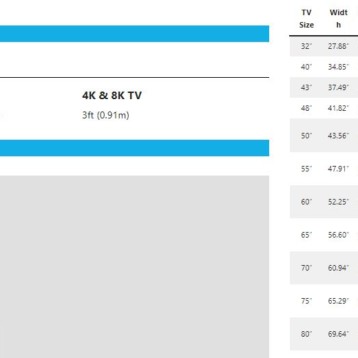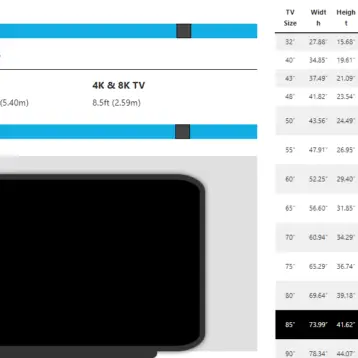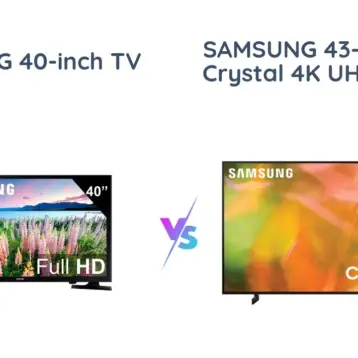As home entertainment takes center stage, the allure of large-screen TVs continues to captivate audiences. The surge in popularity stems from immersive cinematic experiences and enhanced gaming visuals.
However, the key lies in choosing the right size for your space—a crucial decision shaping your home entertainment haven. Let’s explore the difference between 75 and 85 Inch TV and which one will be perfect fit for you,
75 vs 85-inch TV: Factors to Compare

Size:
The size of a TV is perhaps the most noticeable difference between a 75-inch and an 85-inch model. The physical dimensions of the TV will directly impact how it fits into your space. Measure the area where you plan to place the TV and consider factors such as wall space, furniture arrangement, and room layout. A larger TV can provide a more cinematic experience, especially for movie nights or gaming sessions, but it’s essential to ensure it doesn’t overwhelm the room.
Viewing Area:
The viewing area refers to the actual screen space available for watching content. An 85-inch TV offers a larger viewing area compared to a 75-inch TV, providing a more immersive experience, particularly for larger rooms or seating arrangements where viewers are spread out. However, it’s crucial to strike a balance between screen size and viewing distance to avoid straining your eyes or neck.
Viewing Distance:
Viewing distance is the distance between your seating area and the TV screen. It’s essential to find the optimal viewing distance for your chosen TV size to ensure a comfortable and enjoyable experience. For larger TVs like an 85-inch model, you may need to sit farther back to take in the entire screen without feeling overwhelmed. Conversely, a 75-inch TV might be better suited for closer viewing distances in smaller rooms or cozy living spaces.
Features & Apps:
When comparing TVs, consider the features and smart TV apps offered by each model. Look for features such as high refresh rates for smooth motion, HDR support for enhanced contrast and colors, and smart TV platforms with access to popular streaming services like Netflix, Hulu, and Disney+. Pay attention to the user interface and ease of navigation, as well as any additional features that may enhance your viewing experience, such as voice control or gaming modes.
Affordability:
Price is a significant consideration when choosing between a 75-inch and an 85-inch TV. Larger TVs typically come with a higher price tag due to the increased manufacturing costs associated with larger panels. Evaluate your budget and weigh the cost difference between the two sizes against the benefits of a larger screen. Consider whether the extra expense is justified based on your viewing preferences, room size, and long-term usage.
Fitting Your Decor:
Beyond functionality, consider how the TV will fit into your overall decor scheme. Look for design elements such as slim bezels, sleek stands, or mounting options that complement your aesthetic preferences. Consider factors like room lighting, wall color, and existing furniture to ensure the TV seamlessly integrates into your space without clashing with other elements. Additionally, think about cable management and how the TV’s size and placement will impact the overall look and feel of the room.
Resolution & Pixel Density:
Both 75-inch and 85-inch TVs are available in various resolutions, including Full HD, 4K, and even 8K. Higher resolution TVs offer sharper images and greater detail, particularly noticeable on larger screens. Consider the resolution and pixel density of the TVs you’re comparing to ensure a crisp and clear picture quality, especially if you plan to sit closer to the screen.
75’’ Vs 85’’ Inch TV: Which one is better?
The final verdict ultimately depends on your specific needs and preferences:
- Choose a 75-inch TV if:
- You have a smaller to medium-sized room.
- You prefer a more budget-friendly option.
- You want a balance between screen size and space utilization.
- Choose an 85-inch TV if:
- You have a large room or dedicated home theater space.
- You prioritize an immersive viewing experience.
- Your budget allows for the higher cost of a larger TV.
Consider factors such as room size, viewing distance, budget, and personal preference to determine which size best suits your needs. Ultimately, both sizes offer fantastic viewing experiences, so it’s about finding the right fit for your space and preferences.










